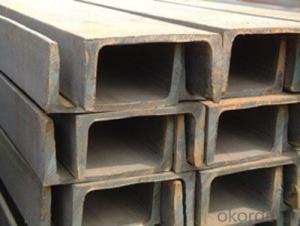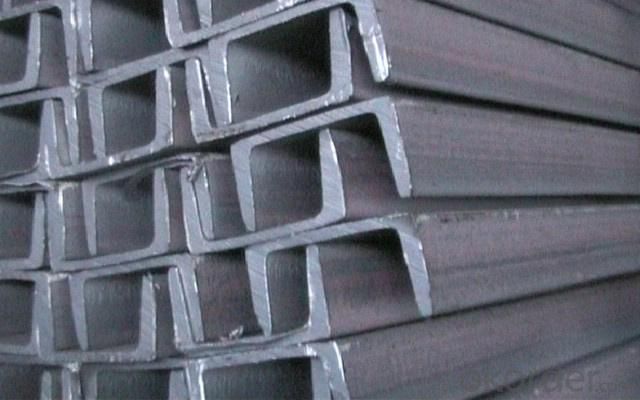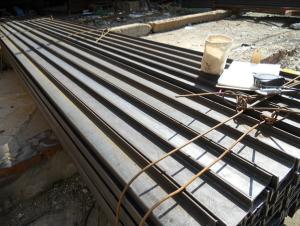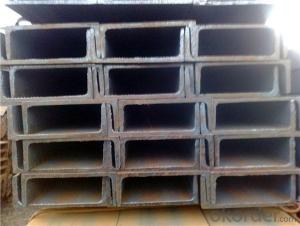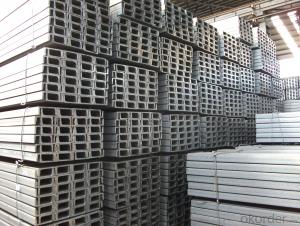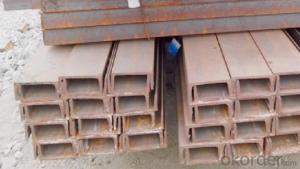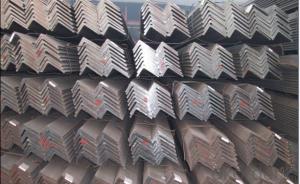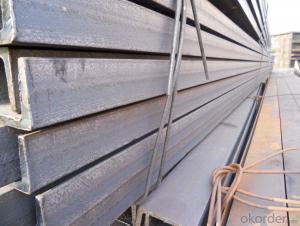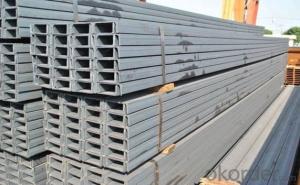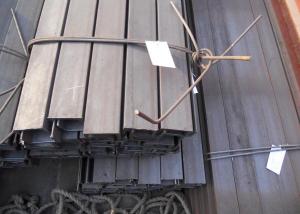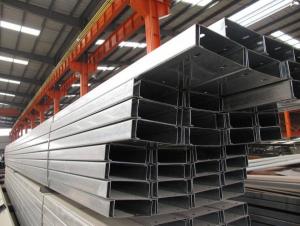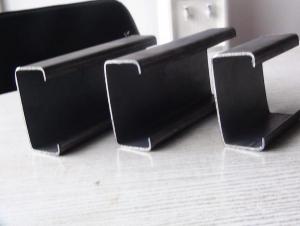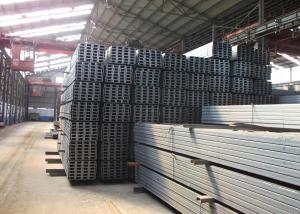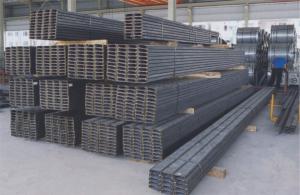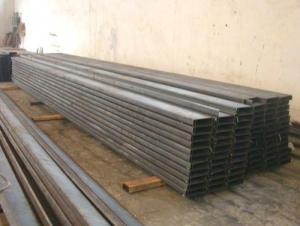Steel U-Channel (SS400, ST37-2, A36, S235JRG1, Q235, Q345)
- Loading Port:
- Tianjin
- Payment Terms:
- TT or LC
- Min Order Qty:
- 3000 PCS
- Supply Capability:
- 12000 PCS/month
OKorder Service Pledge
OKorder Financial Service
You Might Also Like
OKorder is offering high quality Steel U-Channels (SS400, ST37-2, A36, S235JRG1, Q235, Q345) at great prices with worldwide shipping. Our supplier is a world-class manufacturer of steel, with our products utilized the world over. OKorder annually supplies products to European, North American and Asian markets. We provide quotations within 24 hours of receiving an inquiry and guarantee competitive prices.
Product Applications:
Steel U-Channels (SS400, ST37-2, A36, S235JRG1, Q235, Q345) are ideal for structural applications and general fabricating, as well as transportation and engineering.
Product Advantages:
OKorder's Steel Channels are durable, strong, and resists corrosion.
Main Product Features:
· Premium quality
· Prompt delivery & seaworthy packing (7-10 days after receiving deposit)
· Corrosion resistance
· Can be recycled and reused
· Lighter than concrete
· Professional Service
· Competitive pricing
Product Specifications:
Grade: SS400, ST37-2, A36, S235JRG1, Q235, Q345
Height: 90 – 400mm
Wall Thickness: 6.0 – 16.0mm
Length: 6m – 12m, as per customer request
FAQ:
Q1: Why buy Materials & Equipment from OKorder.com?
A1: All products offered byOKorder.com are carefully selected from China's most reliable manufacturing enterprises. Through its ISO certifications, OKorder.com adheres to the highest standards and a commitment to supply chain safety and customer satisfaction.
Q2: How do we guarantee the quality of our products?
A2: We have established an advanced quality management system which conducts strict quality tests at every step, from raw materials to the final product. At the same time, we provide extensive follow-up service assurances as required.
Q3: How soon can we receive the product after purchase?
A3: Within three days of placing an order, we will begin production. The specific shipping date is dependent upon international and government factors, but is typically 7 to 10 workdays.
Q4: What makes stainless steel stainless?
A4: Stainless steel must contain at least 10.5 % chromium. It is this element that reacts with the oxygen in the air to form a complex chrome-oxide surface layer that is invisible but strong enough to prevent further oxygen from "staining" (rusting) the surface. Higher levels of chromium and the addition of other alloying elements such as nickel and molybdenum enhance this surface layer and improve the corrosion resistance of the stainless material.
Q5: Can stainless steel rust?
A5: Stainless does not "rust" as you think of regular steel rusting with a red oxide on the surface that flakes off. If you see red rust it is probably due to some iron particles that have contaminated the surface of the stainless steel and it is these iron particles that are rusting. Look at the source of the rusting and see if you can remove it from the surface.
Images:
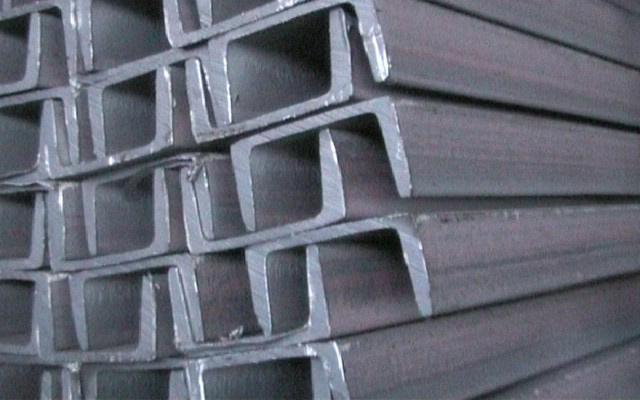
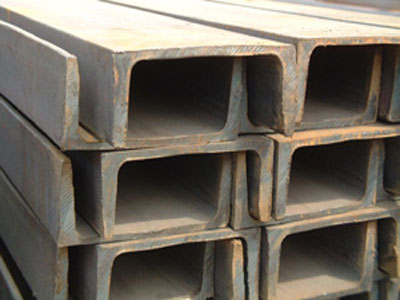
- Q: Can steel channels be used for mezzanine flooring?
- Indeed, mezzanine flooring can make use of steel channels. Owing to their robustness, longevity, and capacity to bear weight, steel channels frequently find application in the construction of mezzanine floors. They serve as a dependable foundation for raised platforms and can bear substantial loads. Furthermore, steel channels can be effortlessly integrated with other substances like steel decking or plywood to establish a firm and reliable flooring. In general, steel channels are highly favored for mezzanine flooring due to their structural soundness and capability to endure heavy foot traffic and machinery.
- Q: Can steel channels be used in signage applications?
- Yes, steel channels can be used in signage applications. They provide durability, stability, and a sleek appearance, making them suitable for outdoor and indoor signage installations. Additionally, steel channels can be easily customized and fabricated to meet specific design requirements, making them a versatile choice for signage applications.
- Q: What are the maintenance requirements for steel channels?
- To maintain steel channels effectively, it is essential to regularly clean and inspect them to safeguard their structural stability and prevent corrosion. To eliminate any accumulated dirt, dust, or debris on the channel surfaces, cleaning should be carried out using a mild soap and water solution or a non-abrasive cleaner. It is crucial to refrain from using harsh chemicals or abrasive cleaners, as these can harm the steel's protective coatings. Conducting regular inspections is of utmost importance to detect any signs of wear, damage, or rust formation. If any visible rust is observed, immediate action should be taken by removing the rust using a wire brush and applying a rust-inhibiting primer and paint to shield the steel from further corrosion. In regions with high humidity or exposure to saltwater or chemicals, more frequent inspections and maintenance may be necessary. Furthermore, it is vital to ensure that the steel channels remain unobstructed and free from debris that could hinder their functionality or undermine their structural integrity. Regular checks should be performed to verify that the channels are correctly aligned and securely fastened to their supporting structure. By adhering to proper maintenance practices, the lifespan of steel channels can be extended, and their intended function can be preserved. It is also advisable to follow any maintenance guidelines provided by the manufacturer or seek professional advice regarding specific requirements based on the application and installation environment of the steel channels.
- Q: Can steel channels be used for creating support structures for material handling systems?
- Indeed, support structures for material handling systems can be created using steel channels. The strength, durability, and versatility of steel channels make them a favored option for support structures. They furnish a steady and dependable framework capable of enduring substantial loads and delivering enduring support for material handling systems. Moreover, steel channels can be conveniently tailored and manufactured to fulfill specific demands, rendering them appropriate for diverse sorts of material handling equipment like conveyors, racks, and shelving systems. All in all, steel channels present a sturdy resolution for constructing support structures for material handling systems.
- Q: Are steel channels suitable for cold storage facilities?
- Steel channels are indeed a suitable option for cold storage facilities. Renowned for their robustness and endurance, steel channels excel at bearing heavy loads and enduring severe temperatures. Cold storage facilities necessitate materials capable of enduring frigid temperatures without jeopardizing their structural integrity, and steel channels fulfill these demands effortlessly. Furthermore, steel channels exhibit resistance to corrosion, a vital attribute in cold storage facilities where dampness and condensation may be prevalent. In summary, steel channels provide the imperative strength, durability, and corrosion resistance required for an optimal selection in cold storage facilities.
- Q: Are steel channels suitable for agricultural storage buildings?
- Yes, steel channels are suitable for agricultural storage buildings. Steel channels, also known as C-channels or U-channels, are commonly used in construction due to their strength and durability. They provide strong structural support and can withstand heavy loads, making them ideal for storing agricultural equipment, machinery, and livestock feed. Additionally, steel channels are resistant to pests, fire, and rot, ensuring the safety and longevity of the storage building. They are also versatile and can be easily customized to meet specific storage needs, such as adding shelves or hooks for hanging tools and equipment. Overall, steel channels are a reliable choice for agricultural storage buildings, offering a sturdy and secure solution for farmers and agricultural businesses.
- Q: What standard is channel steel 250*90*9?
- Channel 250*90*9 is class B, channel 25, GB/707-1988
- Q: Are steel channels suitable for the mining manufacturing industry?
- Yes, steel channels are highly suitable for the mining manufacturing industry. Steel channels are commonly used in various industries, including mining, due to their excellent strength and durability. The mining industry requires heavy-duty equipment and machinery that can withstand harsh conditions and rigorous use. Steel channels, being made of a strong and robust material, can provide the necessary support and structural integrity to handle the demanding requirements of the mining manufacturing industry. Moreover, steel channels offer versatility in terms of design and configuration, allowing them to be used in a wide range of applications within the mining industry. They can be used to construct frameworks, support structures, conveyor systems, and other equipment necessary for mining operations. Furthermore, steel channels have high load-bearing capacities, which is essential in the mining industry where heavy loads and vibrations are common. They can efficiently distribute weight and handle stress, ensuring the safety and reliability of mining equipment and structures. Additionally, steel channels are resistant to corrosion, making them suitable for use in the mining industry where exposure to moisture, chemicals, and other corrosive substances is prevalent. This corrosion resistance prolongs the lifespan of the equipment, reducing maintenance and replacement costs. In conclusion, steel channels are highly suitable for the mining manufacturing industry due to their strength, durability, versatility, and resistance to corrosion. They provide the necessary support and structural integrity required for heavy-duty mining equipment and structures, making them a reliable choice for various applications within the industry.
- Q: How big is the channel used for the 4 metre span?
- The specifications are expressed by the height of the waist (H) * leg width (b) * waist thickness (d), such as "work 160*88*6", which means that the waist height is 160 mm, the width of the leg is 88 mm, and the thickness of the waist is 6 mm. The specifications of I-beam can also be expressed by type. The model indicates the height of centimeters, such as 16#.
- Q: How many tons per ton for channel 12?
- 12# channel steel appearance size: A. height 120 mm. Leg length 53 mm. Thickness 5 mmWhat is the length of 12# channel? Specifications: A. 6M12# how much is the current price of the channel steel ton?Answer: 3000-4000 yuan
Send your message to us
Steel U-Channel (SS400, ST37-2, A36, S235JRG1, Q235, Q345)
- Loading Port:
- Tianjin
- Payment Terms:
- TT or LC
- Min Order Qty:
- 3000 PCS
- Supply Capability:
- 12000 PCS/month
OKorder Service Pledge
OKorder Financial Service
Similar products
Hot products
Hot Searches
Related keywords
